The Last of Us Part 1 Performance Review
The Last of Us Part 1
PS5 vs PS4 Pro vs PS3
Loading
By Michael Thompson
Posted: Aug 31, 2022 3:00 pm
Naughty Dog has returned with a reimagining of arguably its greatest work to date. Not quite a ground-up remake but much more than a remaster, The Last of Us Part 1 on PlayStation 5 is an extremely effective meld of the old and the new.
The story of Joel and Ellie needs no introduction, and nothing has changed here on that front. What has changed is the experience, thanks to the updated Naughty Dog engine that powered the sequel. This reinvigorated PS5 version has benefited greatly – but it is not a case of simply porting things over, as this is likely based on the PlayStation 4 Remastered code, which has been updated with the latest rendering technology within the updated Sequel’s engine. Today we’ll be digging into the improvements in the new version, the performance modes available, and how everything looks and plays compared to the original version.
Visual Improvements
Many new rendering techniques have helped bring The Last of Us up to date, such as the oil painting-like materials in the world, impeccable character models, and skin rendering complete with movie-level physically-based shading. This is the single biggest leap from either of the previous two editions, and many of the models are the ones we saw in the sequel. The animation and bone rigs of faces have also been improved with significantly better vowel forming of mouths and a wider emotive set of facial expressions. Some characters have also been redesigned from scratch, with Tess standing out as a drastic shift from the original. Changes to faces can be subjective, but the increase in detail, photorealism, movement, and sheer fidelity cannot be argued. The quality here is exceptional and nearly brings Part 1 in line with its 2020 sequel.
The “nearly” is because not everything is a match for the newer game, and Naughty Dog’s team is still working with the older core game engine code, motion-captured vertex movements, and decade-old performance capture. Some original sequences on both PS3 and PS4 were all still in-engine but not real-time; instead, they were pre-rendered out to a video file via a PlayStation 3 rendering farm back in 2013. Here on PlayStation 5 they are all real-time but based on the exact same core data, which means the improvements to models, animation, etc. are limited in certain areas. Issues like characters warping into new positions from grabs or combat are much better now than the remaster, but the movement and timing of moment-to-moment gameplay and cutscenes are a match. Sure, camera shots can be altered, post effects improved, and shading quality upgraded – as we see with the increased light sources, edge lighting on characters, and even minor changes to motion and skinning. But at its core the PS5 version is an old canvas covered in a fresh lick of the finest digital paint you can get.
Some original sequences on both PS3 and PS4 were all still in-engine but not real-time; instead, they were pre-rendered out to a video file via a PlayStation 3 rendering farm back in 2013. Here on PlayStation 5 they are all real-time but based on the exact same core data, which means the improvements to models, animation, etc. are limited in certain areas. Issues like characters warping into new positions from grabs or combat are much better now than the remaster, but the movement and timing of moment-to-moment gameplay and cutscenes are a match. Sure, camera shots can be altered, post effects improved, and shading quality upgraded – as we see with the increased light sources, edge lighting on characters, and even minor changes to motion and skinning. But at its core the PS5 version is an old canvas covered in a fresh lick of the finest digital paint you can get.
Beyond the models, material composites, post effects, et al. – which includes excellent per-object motion blur, bokeh depth of field, subsurface scattering, and improved decals for gore and such – many of the level construction, foliage, assets, and even textures and materials have all been improved, increased, or even remade completely. Many shots show a significant leap in polygon count, with improved brick textures, changes to debris and rubbish, and more objects and details present within the world. Areas have been altered to move walls, gates, signs, and more, and the reduction of water bodies removes the cubemap issues we saw in the original. Part 1 uses screen space reflections mixed with those projected cubemaps, which improves the accuracy of reflections but can still have blend issues when drawing in and out when the camera moves.
Many shots show a significant leap in polygon count, with improved brick textures, changes to debris and rubbish, and more objects and details present within the world. Areas have been altered to move walls, gates, signs, and more, and the reduction of water bodies removes the cubemap issues we saw in the original. Part 1 uses screen space reflections mixed with those projected cubemaps, which improves the accuracy of reflections but can still have blend issues when drawing in and out when the camera moves.
Character models are improved and include brand-new modes, something you will see universally, with a much wider variety in characters and less reuse, helped by the leap in memory offered by the PS5. This helps change the look and feel of many scenes as you play. It’s by no means a night-and-day difference, but it again highlights the effort and attention that went into rebuilding huge portions of The Last of Us. The PlayStation 4 remaster, even shown in the best light possible on the PS4 Pro, is still largely a higher-resolution version, both in output to screen and textures, of the PlayStation 3 original. That will be 10 years old next year, and yet still stands up impeccably here, highlighting how ahead of the pack Naughty Dog was back then and how it certainly led the way on maxing out the PS3 – something covered more within the Performance section.
That will be 10 years old next year, and yet still stands up impeccably here, highlighting how ahead of the pack Naughty Dog was back then and how it certainly led the way on maxing out the PS3 – something covered more within the Performance section.
Game Refinements
From a presentation perspective, the voice capture, sound effects, soundtrack, big action scenes, and combat are all practically identical to the original. This means that the dodge mechanism from TLOU Part 2 is not here, nor is the enhanced dismemberment gore system – only the original game’s gore system. It is certainly still a violent game, and things like blood pooling, decal impacts, and other additions have been added, but the combat, both with weapons and melee, plays as it did in the original game. This is likely due to the animation and AI scripting of the Remastered code limiting some of the choices here, similar to what we just covered around the model bone rigging improvements earlier. It is refined and better than the source versions, but it is still limited in the scope of those improvements. This means enemies still react as they did, running at you and attacking in the same way.
This means enemies still react as they did, running at you and attacking in the same way.
Other tweaks come by way of the DualSense controller’s abilities, including the use of haptic feedback and adaptive triggers, as well as improved sound mixing via 3D audio and a slew of customisation options to play how you want. Tutorials and menu pop-ups have also been improved, with them no longer placing a hold on gameplay.
Modes
There are two performance modes to choose from: Native 4K Fidelity mode, and Dynamic 4K Performance mode, with a third Variable Refresh Rate option available if your display supports it.
Fidelity mode targets 30fps, unless you have a 120Hz screen, in which case it targets 40fps – a 33% improvement in performance. This is simply due to the frame-time needed, with 40fps requiring a new frame every 25ms, which is divisible into 120Hz and 30fps requiring 33.3ms, which is not.
The Performance mode, meanwhile, targets 60fps regardless of the type of screen you have.
Finally, if you have a display capable of variable refresh rate, a third option becomes available, which unlocks the framerate in either mode. This means you can exceed the 40fps target in Fidelity mode, or the 60fps target in Performance mode.
Performance
Naughty Dog’s developers did an admirable job harnessing the PS3’s notoriously difficult hardware architecture with the original The Last of Us. It was – and remains – an incredible piece of work highlighting how capable that machine could be in the right hands, with quieter moments running at the 30fps target. But once the action heated up, framerates could buckle into the low 20s as alpha effects, light sources, shadows, and high polygon loads taxed the system.
The PlayStation 4 remaster managed to more than double the resolution of the PS3’s 1280x720p to a full 1080p. In addition, it not only solved the performance issues, it also doubled the framerate to 60fps. That said, the framerate was not locked and could dip in combat and cinematics.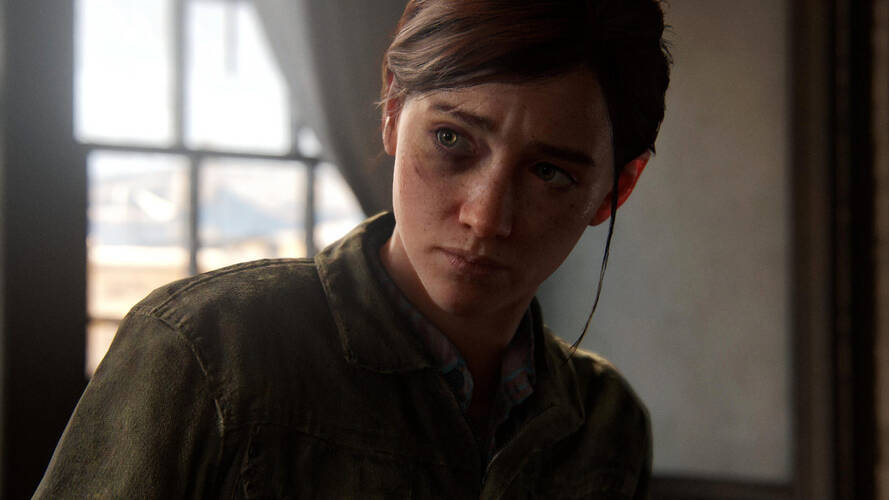 The later PlayStation 4 Pro patch offered an 1800p/60 mode, and while the performance here can dip again into the low 50s and high 40s, it’s far from problematic in most segments. The PS4 Pro version also offered a 1080p/60 mode which was visually identical to the PS3 version (aside from the increased resolution and textures), just with better performance.
The later PlayStation 4 Pro patch offered an 1800p/60 mode, and while the performance here can dip again into the low 50s and high 40s, it’s far from problematic in most segments. The PS4 Pro version also offered a 1080p/60 mode which was visually identical to the PS3 version (aside from the increased resolution and textures), just with better performance.
Starting with the PlayStation 5 Performance mode, we have a dynamic 4K resolution that provides a locked 60fps in all tested sections, no doubt with room to spare. The only dips come from camera cuts during cinematics, which are intended to help physics settle or swap assets between shots. The short version here is if you want to experience the most consistent performance level then you should turn this mode on and never look back.
The need for a native 4K output can be strong, though, and as such the 30fps mode is the same story, never dipping below it in my tests with the unlocked 40fps mode showing that it, again, has room to spare. Therefore, the Fidelity mode can hit 50fps in quiet sections at that fixed 3840x2160p. In action or real-time cutscenes, though, it can be around the 45fps mark, meaning we are getting approximately 50% higher performance over the 30fps mode, which really highlights the performance headroom that capped mode leaves. In dense areas with fog volumes, particles, and shadow-casting light sources it can dip into the mid 30s, but these are rare from all my tests. As such, this offers the cleanest image quality with still a very smooth performance level, feeling closer to 60 than 30, and could be a big pull for many. I will state, though, that you can feel the dips to the low 30s when they crop in this mode, albeit very rarely.
Therefore, the Fidelity mode can hit 50fps in quiet sections at that fixed 3840x2160p. In action or real-time cutscenes, though, it can be around the 45fps mark, meaning we are getting approximately 50% higher performance over the 30fps mode, which really highlights the performance headroom that capped mode leaves. In dense areas with fog volumes, particles, and shadow-casting light sources it can dip into the mid 30s, but these are rare from all my tests. As such, this offers the cleanest image quality with still a very smooth performance level, feeling closer to 60 than 30, and could be a big pull for many. I will state, though, that you can feel the dips to the low 30s when they crop in this mode, albeit very rarely.
The final mode is the unlocked Performance mode, and this again can see around a 65% increase over that previous 60fps cap, even allowing the engine to hit the 100s in rare circumstances, though with general action and cinematics hovering somewhere in the middle. Due to the mode requiring VRR to work, the framerate always stays north of that 60fps base.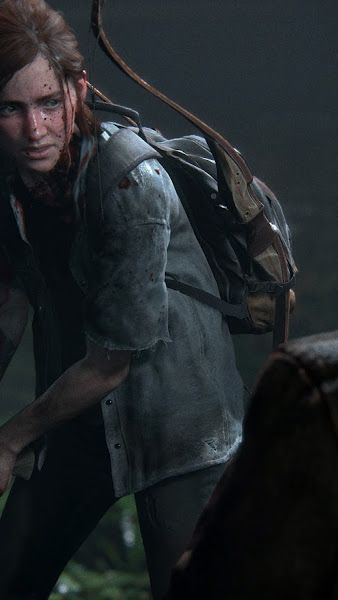 It is the fastest mode here. Again, the only change between this and the Fidelity mode is that this dynamically scales down from that 4K mode, likely to a 1440p base. But in some sections it can be at that same 4K target or just below, meaning the balance of pixels and performance is kept in focus. The extra response this mode gives does help in combat sections, and I am impressed by how fast and clean this mode is considering how much it is pushing at times. The choice of the two modes – with the additional VRR option – means that you will certainly find a mode that works best for you.
It is the fastest mode here. Again, the only change between this and the Fidelity mode is that this dynamically scales down from that 4K mode, likely to a 1440p base. But in some sections it can be at that same 4K target or just below, meaning the balance of pixels and performance is kept in focus. The extra response this mode gives does help in combat sections, and I am impressed by how fast and clean this mode is considering how much it is pushing at times. The choice of the two modes – with the additional VRR option – means that you will certainly find a mode that works best for you.
A remake or remaster can be a blessing or a curse, and with The Last of Us Part 1 being the second revision in a decade for Naughty Dog’s post-apocalyptic action game, some may say this version was not yet required. However, the exhaustive upgrades on offer here are hard to ignore. The Last of Us has never looked better, with models and world detail being close to parity with the 2020 sequel. It is not quite at the same level of fidelity, but certainly close enough in the vast majority to stand proud on the PS5. If you look closely you can still see areas of the original version underneath: incidental objects can be low polycount, and the real-time cutscene models and lighting still look much better than in-game at times. That said, whether you’re coming to it for the first time or you have already played and completed this stunning game, this update is the best way to play, systematically upgraded and improved across the board. Do not expect anything different over the old version aside from visual quality and performance increases, as you will be disappointed if you go in looking for additional storytelling. That, though, is the beauty of a new version like this: many will have never played this game before, and now the PS5 houses the absolute best way to enjoy it for the first – or fifth – time.
If you look closely you can still see areas of the original version underneath: incidental objects can be low polycount, and the real-time cutscene models and lighting still look much better than in-game at times. That said, whether you’re coming to it for the first time or you have already played and completed this stunning game, this update is the best way to play, systematically upgraded and improved across the board. Do not expect anything different over the old version aside from visual quality and performance increases, as you will be disappointed if you go in looking for additional storytelling. That, though, is the beauty of a new version like this: many will have never played this game before, and now the PS5 houses the absolute best way to enjoy it for the first – or fifth – time.
The Last of Us Part 1: all performance modes tested, which should you use?
The Last of Us on PS3 was a boundary-pushing title with stunning graphics and animation. Novel techniques — like capsule shadows and real-time bounce lighting — alongside ruthless attention to detail produced one of the most technically accomplished games in its time, even though it often failed to reach its 30fps target, frequently dipping into the mid-20s in combat and traversal sequences. Enter The Last of Us Part 1.
Enter The Last of Us Part 1.
Some nine-and-a-half years after its original release, The Last of Us has been fully remade with modern technology on PS5 hardware. With an advanced suite of graphics tech in tow, does the remake also blow past its frame-time budgets? Or has Naughty Dog more sensibly balanced visual beauty with fluid frame-rates?
The Last of Us Part 1 offers players five genuine visual modes, engaged through various selections and system-level tweaks. With the PS5 set to 60Hz output, you get the option of a fidelity mode that offers 4K visuals with a 30fps target framerate, alongside a performance mode that advertises dynamic 4K visuals or native 1440p visuals depending on your output resolution — but actually delivers 1440p regardless. With 120Hz engaged, you get the same options, though the fidelity mode now promises a 40fps framerate target. As an additional modifier, engaging both 120Hz and VRR gives you the option to ‘unlock’ the 120Hz options, maximising frame-rate and using VRR to smooth out any inconsistencies.
Watch on YouTube
Oliver Mackenzie tests out every graphical mode to investigate performance in the new PS5 TLOU remaster.
| 60Hz modes | 120Hz modes | 120Hz + VRR modes |
|---|---|---|
| Fidelity (4K, 30fps) | Fidelity (4K, 40fps) | Fidelity unlocked (4K, 40fps+) |
| Performance (1440p, 60fps) | Performance unlocked (1440p, 60fps+) | |
So let’s unravel these options, starting with the 4K output performance mode. Thankfully, results here are very straightforward. Essentially, this performance mode offers a very convincing 60fps update. If you’ve played The Last of Us Part 2 on PS5 you’ll have a good idea of what to expect: a very smooth and stable 60fps even in intense scenes, with only five instances of frame-rate drops in gameplay and only one that proved actually disruptive — a hallway encounter a third of the way through the game that repeatedly produced frame-rates in the 50 to 55fps range. The game’s cutscenes do drop one frame in advance of camera cuts so the engine can generate a spare frame to use for TAA, but this is difficult to notice in the performance mode.
The game’s cutscenes do drop one frame in advance of camera cuts so the engine can generate a spare frame to use for TAA, but this is difficult to notice in the performance mode.
Let’s address the last of the conventional modes next — the fidelity mode at 60Hz output. This mode advertises a 4K 30fps setup, halving frame-rate in exchange for more than double the pixel count. Fluidity takes an obvious hit, as expected, with palpably laggier controls and choppier animation owing to the increased frame-time target — but frame-rate drops are less frequent. It’s essentially a straight 30fps throughout, save for a single encounter that pushed frame-rates as low as 26fps. However, there are some issues with frame delivery in this mode, with the game delivering a smattering of closely-spaced frames every so often. This isn’t likely to be noticed by most players, but could still be improved.
The performance mode runs at a locked 60fps, save for a handful of encounters — this being the absolute worst.
While a full-fat 4K image is appreciated and does look very clean, the loss of fluidity relative to the performance mode is a bit painful. But what if there was an option that split the difference between these two modes? On paper, that’s exactly what the 40fps fidelity mode is supposed to offer, with the same 4K resolution and a boosted frame-rate — but while 40fps modes have worked well in other PS5 titles, here there’s not enough headroom over the 30fps line to take full advantage, and instead you just get a more inconsistent presentation often in the region of 35fps. Dynamic resolution by all indications isn’t present either, so the title can’t open up performance headroom as needed in intense scenes. On the plus side however, the frame-time fluctuations when running at 120Hz aren’t as noticeable as when running at 60Hz.
The final run of unlocked frame-rate modes may be of some help here however, and are accessible when 120Hz and VRR are enabled in the PS5’s console settings. This lets us run TLOU in performance mode without a frame-rate cap, leaning on VRR to smooth out frame delivery. This provides a nice increase to smoothness, with the game producing frame-rates in the 60-100fps region, most often 70-80fps. The trade-off here with the regular performance mode is essentially slightly less consistent input response and animation in exchange for a higher general frame-rate level. Plus, any dips beneath 60fps are smoothed out nicely and are essentially imperceptible, though these were rare of course even running with full v-sync. It’s a nice boost — though it’s only really worth it if you have a television that enables VRR without disabling features like local dimming.
This lets us run TLOU in performance mode without a frame-rate cap, leaning on VRR to smooth out frame delivery. This provides a nice increase to smoothness, with the game producing frame-rates in the 60-100fps region, most often 70-80fps. The trade-off here with the regular performance mode is essentially slightly less consistent input response and animation in exchange for a higher general frame-rate level. Plus, any dips beneath 60fps are smoothed out nicely and are essentially imperceptible, though these were rare of course even running with full v-sync. It’s a nice boost — though it’s only really worth it if you have a television that enables VRR without disabling features like local dimming.
The 4K 40fps fidelity mode is shaky without VRR enabled, lacking the headroom to stick to its 40fps target.
The unlocked fidelity mode is considerably better than its v-synced counterpart too. The near-constant performance fumbles are smoothed out; we’re mostly in 30-45fps territory but VRR keeps frame-time judder in check.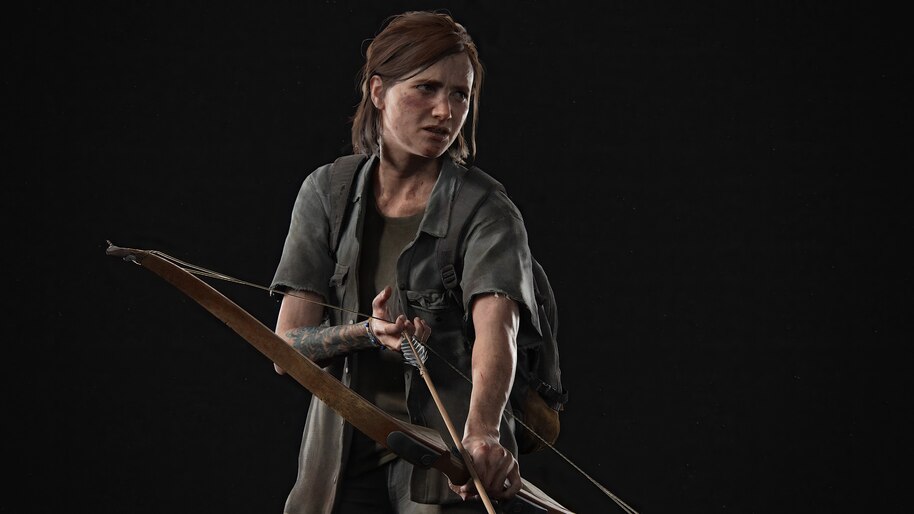 The frame-rate inconsistency is much more obvious to me here than in the unlocked performance mode, but I’d still consider this clearly preferable to either of the v-synced fidelity options.
The frame-rate inconsistency is much more obvious to me here than in the unlocked performance mode, but I’d still consider this clearly preferable to either of the v-synced fidelity options.
There’s also the option of enabling VRR on the system level and leaving the ‘unlocked framerate’ toggle off in the game settings. This works essentially as expected — the performance mode runs at a straight 60fps with any momentary dips beneath smoothed out and is a reasonable option if you prefer an ultra-consistent presentation. Fidelity mode seems to work in the same fashion, but with low framerate compensation enabled — so just like the unlocked fidelity mode but with a cap at 40fps. It ends up feeling quite similar to that mode overall.
As a final note, I thought I’d do a quick comparison with prior versions of The Last of Us, starting with the flawed PS3 release. The remake has hugely improved performance relative to this earlier version. Even in demanding combat sections, the new release manages to stick firmly to its 30fps and 60fps performance targets in almost every example, without the 20-25fps lows observed on the PS3.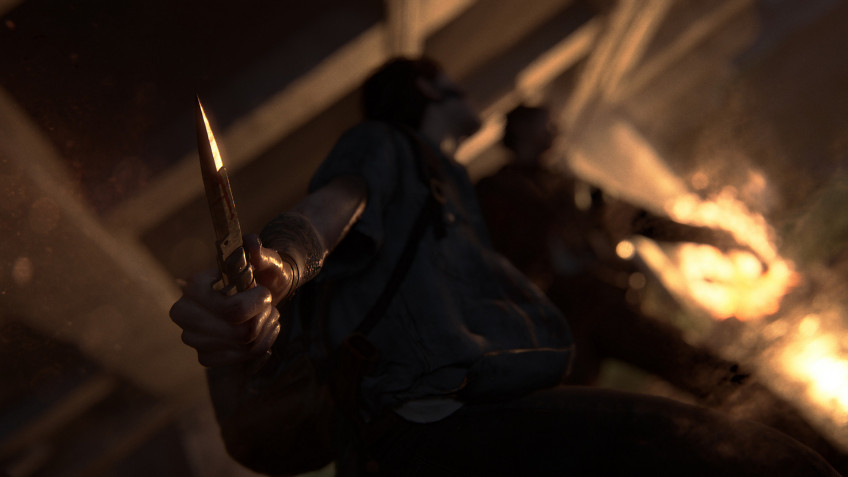 It’s a solid showing but given the graphics tech, which appears broadly in line with the PS4 exclusive The Last of Us Part 2, it isn’t a particular surprise. Still, the remake pushes beautiful visuals while offering consistent performance, as long as you avoid the v-synced 40fps fidelity mode, which is quite flawed.
It’s a solid showing but given the graphics tech, which appears broadly in line with the PS4 exclusive The Last of Us Part 2, it isn’t a particular surprise. Still, the remake pushes beautiful visuals while offering consistent performance, as long as you avoid the v-synced 40fps fidelity mode, which is quite flawed.
There’s a massive gulf in visuals and performance from PS3 to PS5 — as you’d hope.
Measuring this title up against 2014’s PS4 port, dubbed The Last of Us Remastered, gives more equivocal results. Running on PS5 hardware, The Last of Us Remastered delivers a perfect 1800p 60fps by default, with a 4K 30fps option as well. The graphics are more primitive and you can’t unlock any VRR-driven frame-rate boosts, but it does deliver a similar level of performance and fluidity on the whole.
So, the final verdict. Of the five actual graphics modes on tap, I’d only advise against one — the 4K 40fps fidelity mode without VRR — due to its inconsistent performance. The other modes offer varying degrees of fluidity and consistency, but all have their own reasonable merits and tradeoffs. My personal preference is for the performance modes, as I didn’t find that the boost to 4K made enough of a visual impact at typical viewing distances to compromise frame-rates. I’m particularly partial to the unlocked performance option and its VRR-fueled smoothness.
My personal preference is for the performance modes, as I didn’t find that the boost to 4K made enough of a visual impact at typical viewing distances to compromise frame-rates. I’m particularly partial to the unlocked performance option and its VRR-fueled smoothness.
For deeper technical and gameplay coverage of the game itself I’d recommend checking out John’s excellent analysis, which covers the various enhancements and changes in great detail.
As a fan of the original game myself I came away pleased with this effort. I would have appreciated a greater gameplay mix-up as most of the old tricks and exploits players use to beat the game on higher difficulties still work. However, big presentational improvements, including hugely boosted graphics and animation, alongside more realistic AI routines and other gameplay tweaks, render this a worthy remake effort. That largely extends to performance as well, though the 40fps mode could use tweaks to ensure a more stable output. As it stands, The Last of Us Part 1 has consistent and solid performance across a healthy variety of visual options, and is hugely improved over its PS3 predecessor.
As it stands, The Last of Us Part 1 has consistent and solid performance across a healthy variety of visual options, and is hugely improved over its PS3 predecessor.
To see this content please enable targeting cookies.
Part II must be played on OLED TV only — Video on DTF
{«id»:3941,»url»:»\/distributions\/3941\/click?bit=1&hash=dfdc722218d91c789444b7c8a4ff9ca34f5da980fc3bdd52106b8cfd»\»title:»af4″title u0412\u0430\u0448\u0438 \u0442\u043e\u0432\u0430\u0440\u044b \u0432 \u00ab\u041c\u0430\u0440\u043a\u0435\u0442\u0435\u00bb \u0443\u0432\u0438\u0434\u044f\ u0442 \u0431\u043e\u043b\u044c\u0448\u0435 \u043f\u043e\u043a\u0443\u043f\u0430\u0442\u0435\u043b\u0435\u0439″,»buttonText»:»\u040a\u043a», «imageUuid»:»032b9158-103f-5274-a2b0-d333c1b0eef9″,»isPaidAndBannersEnabled»:false}
Probably only the lazy didn’t write about The Last of Us: Part II. So I’ll write my opinion and my impressions from the first 3 hours of the game. Back in 2013, I specifically bought a large 42 ‘Full HD TV to pass TLOU 1, I remember the incredible impressions this masterpiece game brought me 10/10. And now, after 7 years, the second part comes out with a bunch of graphical improvements and, finally, all the juices from PS4 Pro. I started preparing: I sold my PS4 on which I sat for 5 years, bought PS4 Pro on sale, pre-ordered the collector’s edition in 1C back in November, but which they never brought to me, I was a little upset and bought a Special Edition with Now the last thing, after reading a bunch of reviews and forums, I bought a 4K TV 65 inches — LG OLED 65C9. I even read a detailed article on DTF and still chose that I’m not chasing inches, but the quality of the picture. OLED is a TV matrix technology on which the pixels themselves emit light, removing the extra black-distorting backlight, now black is perfect black, that is, the pixel is off. I didn’t get a chance to test Full Array Local Dimming black level boosting technology on LED TVs, so I can’t say or say anything bad about other premium LED TVs.
And now, after 7 years, the second part comes out with a bunch of graphical improvements and, finally, all the juices from PS4 Pro. I started preparing: I sold my PS4 on which I sat for 5 years, bought PS4 Pro on sale, pre-ordered the collector’s edition in 1C back in November, but which they never brought to me, I was a little upset and bought a Special Edition with Now the last thing, after reading a bunch of reviews and forums, I bought a 4K TV 65 inches — LG OLED 65C9. I even read a detailed article on DTF and still chose that I’m not chasing inches, but the quality of the picture. OLED is a TV matrix technology on which the pixels themselves emit light, removing the extra black-distorting backlight, now black is perfect black, that is, the pixel is off. I didn’t get a chance to test Full Array Local Dimming black level boosting technology on LED TVs, so I can’t say or say anything bad about other premium LED TVs.
921
views
I saved up for a long time, but the wait was worth it, I don’t regret a bit, but I hope there will be more projects in the future that reveal the POTENTIAL of OLED and HDMI 2.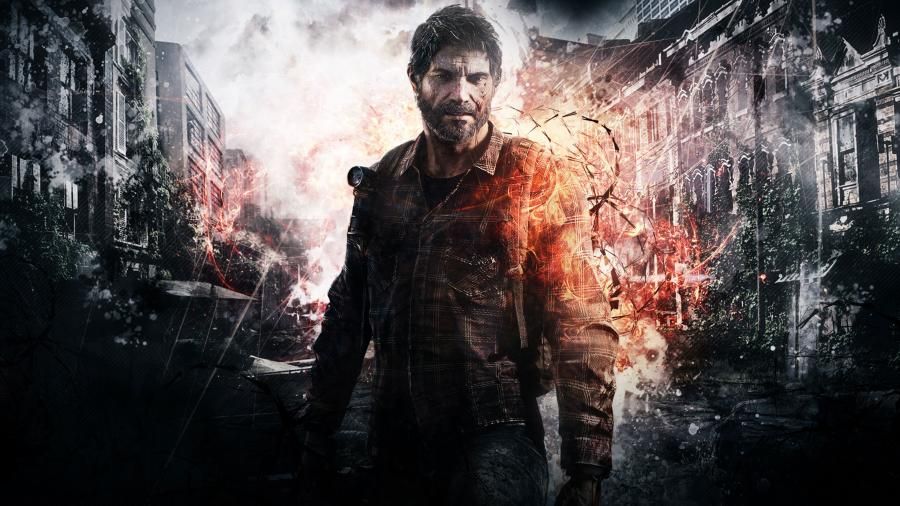 1.
1.
Now I’ll show you what are the advantages, I recorded a video of working in complete darkness in a dark room, where the light sources are a flashlight and windows. See how well and perfectly the rays of light are displayed.
Flashlight operation in a dark room.
When passing through Seattle, I stopped turning on my own flashlight, because in the dark it was much more fun for me to try to see something in complete darkness. It was especially cool when I controlled Ellie with the flashlight on in the dark, I could accidentally turn around sharply so that the camera did not have time to go behind my back and Ellie stood facing me and her Flashlight blinded me for a second, lol.
I confirm that Naughty Dog are also gods with light work in games. There are not so many perfectly dark rooms here, there is always some dirty window from which muddy light pours and illuminates the room a little, you can still see and play who has good eyesight in the dark.
Some gameplay. Contains spoilers.
My game settings are: contrast 7, brightness 0, UI brightness 3.
So perfect setup for The Last of Us: Part II:
1) OLED TV no less than 65 inches
2) PS4 Pro
3) Darkroom
I continue to play a great game on a great TV!
The best game on HDR. The best game for OLED. The best game on PS4.
Top 9 The Last of Us 2 Wallpapers in HD and 4K
The road to revenge is long and hard, and we can’t agree more. The Last of Us 2 takes place five years after The Last of Us and 25 years after the first outbreak. It tells about the life of Ellie and Abby, thirsty for revenge. Post-apocalyptic life is a collection of confusing emotions. On the one hand, green forests prevailed over fields and roads, and you cannot admire the power of nature, even if it is virtual.
On the other hand, you have zombies, militia and seraphim, all trapped in their battles, and thus the war for revenge and survival begins.
The Last of Us 2 was released in June 2020 and combines excellent graphics and features associated with its predecessor. Only this time he is more ruthless and has his share of violence and death.
Based on our immense love for this game, we searched the internet to show the greatness of this game on your desktop.
So, without further ado, let’s take a quick look at some of the best 4K and HD wallpapers from The Last of Us 2.
Note. Click the link below each image to download the wallpaper in its original resolution. Alternatively, Windows 10 users can right-click an image and select Save Image As from the context menu.
In this article
1. Revenge is in the air
In the game, Ellie, driven by loss and injury, sets out to seek justice and revenge, and in truth, it’s an emotional rollercoaster.
Did you know that the development of the game started in 2014.
Download in HD
2.
 4K ABUNDANCE
4K ABUNDANCE
Do you have a 4K computer monitor? Then get these 4k wallpapers on your screen in all its glory.
Moss-covered trees, rainy roads and a blue tint to the picture will definitely make you want to play the game again (and again).
Download in HD
3. Rural roads
Many new games like PUBG or Call of Duty don’t give you time to rest, allow you to think or relax. This will change in Last of Us 2. Here the main character can relax and play a game with the guitar.
Well, this is one of the best ways to use the PS 4’s touchpad. All you have to do is swipe it and you’ll see the guitar make a nice sound. I must say amazing.
Did you know: Joel Ely taught guitar.
Download in HD
4. For nostalgia
Not everything in this game is fun. Gone is the friendly teenager you saw in the first match, and now he has been replaced by an angry adult woman who wants revenge on Joel.
Was there anything that made you uncomfortable?
Download in HD
5. The world won’t last
The game has its moments like Ellie playing the guitar or Ellie playing with her furry friend. Naturally, these things add value to the game. Let’s think about the quiet moments before we start the game of revenge and killing zombies on the streets of Seattle.
Silence before the hurricane?
Download in HD
6. Classic
There is something incredibly beautiful about monochrome wallpaper. It tends to bring a sense of calm and soothe the eyes at the same time. Sure, traditional bright red backgrounds bring their share of bright and sexy colors to the table, but then they can’t beat the classic feel of classic black and white wallpapers, right?
Download in HD
7. Quiet
Who said that game wallpapers should be about game characters.
